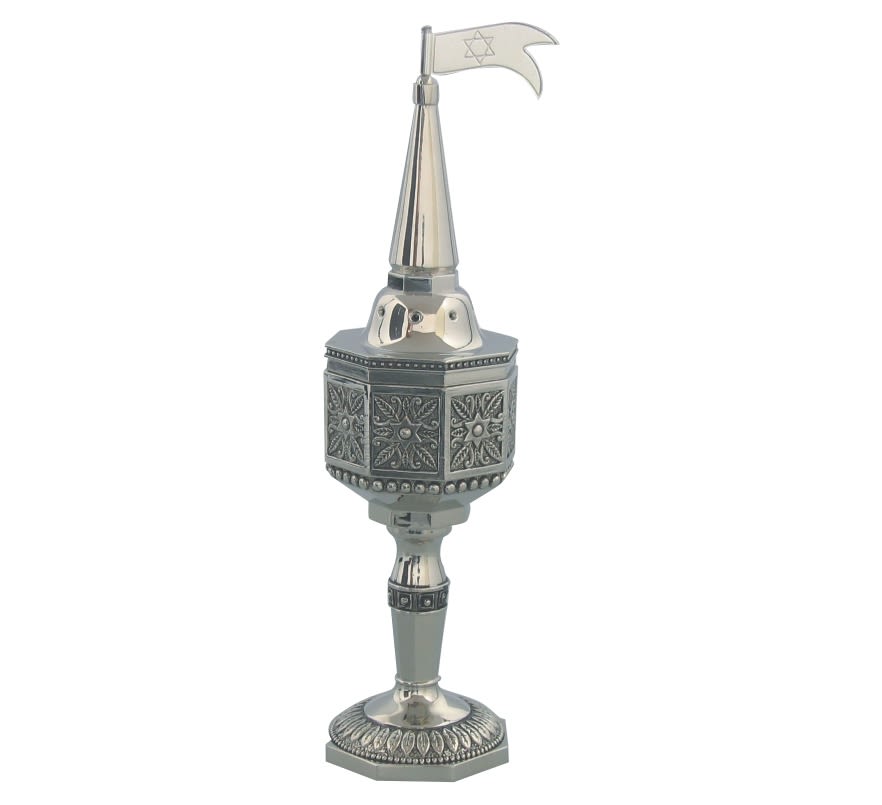
Rabbi Yehuda Meir Shapiro – Daf HaYomi
Date of Passing: 7-Cheshvan. Rabbi Yehuda Meir Shapiro, Rav of Lublin, revolutionized Klal Yisroel’s limud haTorah (method of Torah study). Yeshivas Chachmei Lublin, along with Daf Yomi, was Shapiro's greatest achievement.

Born: March 3, 1887 (5647) Suczawa, Austria-Hungary
Died: October 27, 1933 (5694) Lublin, Poland
Yehuda Meir Shapiro (or Shapira) (March 3, 1887 – October 27, 1933), was a prominent Polish Hasidic rabbi and rosh yeshiva, also known as the Lubliner Rav. He is noted for his promotion of the Daf Yomi (Daily Page of Gomorrah) study program in 1923, and for establishing the Chachmei Lublin Yeshiva in 1930.
In the years 1922-1927, Shapiro was the first Orthodox Jew to become a member in the Sejm (Parliament) of the Second Polish Republic representing the Jewish minority of the country.
Early Years
Yehuda Meir Shapiro was born in 1887 in the city of Suczawa (Shatz), Bucovina, then in the Austrian-Hungarian Empire, now in Romania. He was a descendant of Rabbi Pinchas Shapiro of Korets, one of the students of the Baal Shem Tov, and from his maternal side, of Rabbi Joseph ben Isaac Bekhor Shor, a French tosafist. After cheder, Shapiro began to study with his grandfather, the Baal Minchas Shai (Rabbi Shmuel Yitzhak Schor). Another of his early teachers was Rabbi Shulem Moshkovitz (popularly known as the Shotzer Rebbe. He was also a well known kabbalist).
Shapiro began to get a reputation and became known as the Illui of Shatz. From an early age, he was known as an outstanding leader and gifted speaker. He was soon ordained by many great scholars, including the Maharsham. His grandfather introduced him to the Chortkover Rebbe, and thus began his passion for Chassidism, and the beginning of his relationship with the Chortkover Rebbe.
Early Rabbinic Posts
Galina – His first rabbinical posting came in 1911 when he was appointed Rav of Galina. He spent ten years in the city, during which time he established a yeshiva called Bnei Torah. Construction commenced in 1920. The yeshiva held a Talmud Torah, a place to train rabbis, and a kitchen to feed orphaned children. It ran at a budget of over half a million marks. This yeshiva served as a prototype for what was later to become Chachmei Lublin.
Sanok – After leaving Galina, Shapiro began serving as Rav of Sanok in 1920.
Petrakov – In 1924, Rabbi Meir accepted his third rabbinical position in Petrakov/Piotrkow.
Lublin – On 14 June 1931, he was appointed Rav of Lublin in the old synagogue of the Maharshal.
Daf Yomi
Shapiro introduced the revolutionary idea of Daf Yomi (Hebrew: דף יומי, “page [of the] day” or “daily folio”), a daily regimen undertaken to study the Babylonian Talmud one folio (a daf consists of both sides of the page) each day. Under this regimen, the entire Talmud is completed, one day at a time, in a cycle of seven and a half years. Rabbi Shapiro introduced his idea at the First World Congress of the World Agudath Israel in Vienna on 16 August 1923. The first cycle of Daf Yomi commenced on the first day of Rosh Hashanah 5684 (11 September 1923). Now in its 13th cycle,Daf Yomi has been taken up by tens of thousands of Jews worldwide.
Yeshivas Chachmei Lublin
Yeshivas Chachmei Lublin was, along with Daf Yomi, Shapiro’s greatest achievement. He conceived of a yeshiva for Hasidic Poland, modeled on Lithuanian yeshivas such as Volozhin, Slabodka and Novardok, but which would train Hasidic rabbis as the next generation to lead Polish Jewry. The Yeshiva was housed in a massive building, housed hundreds of students, and had a vast library of over 100,000 books.
On May 22–28, 1924, the cornerstone-laying ceremony took place for the construction of the yeshiva building. Approximately 20,000 people participated in the event. The opening ceremony took place on June 24–25, 1930. Apart from thousands of local Jews, around 10,000 people arrived from all over Poland and abroad. Shapiro served as rosh yeshiva until his death.
Łódź
In 1932, Shapiro was approached by leaders of the Jewish Community of Łódź, who wanted to offer him the position of Chief Rabbi of Łódź. Many people wanted to appoint Rabbi Mendel Alter of Kalish, (b. 1877, Ger) the brother of the Gerrer Rebbe (and youngest son of the Sfas Emes) to this position. Rabbi Shapiro negotiated that a large part of his wage would go to pay off the debts that Chachmei Lublin was still struggling to pay off. Eventually it was decided to give it to Rabbi Shapiro. After all the protracted negotiation that went on to get Rabbi Shapiro into this position, he died three days after being appointed Chief Rabbi.
Agudat Yisrael
Whilst serving in Galina, Rabbi Shapiro began his involvement with Agudat Israel. He was present at its founding conference in 1912. In 1914, he was appointed head of the Education Department of Agudat Yisrael in East Galicia, becoming president in 1922 of Agudat Yisrael in Poland. He played a role in the conference in the city of Lvov, which had the purpose of launching the Aguda in Galatia, some two years after its founding in Katovitz in 5672.
At the time, he was also added as a member to the Moetzet Gedolei HaTorah. Rabbi Shapiro was initially very doubtful as to whether he should become an MP for the party, but was encouraged to do so by his rebbe, the Chortkover.
Rabbi Shapiro, together with Aron Levine and Zalman Sirtzokin, chaired the committee which as a part of the Polish Ministry for Religious Affairs, held responsibility for delegating Rabbinical positions throughout Poland. He was also part of the Vaad HaChinuch.
Beginning in 1922, Rabbi Shapiro served as a parliamentarian to the Polish Sejm. In 1928 he stepped down as a politician so that he could devote all his energies to Chachmei Lublin Yeshiva.
Death
Shapiro became ill with typhus in 1933 and died within the month, on 27 October 1933 (7 Cheshvan 5694)] at the age of 46. His death was mourned in both Jewish and non-Jewish Poland. Countless newspapers across the entire political spectrum, from Orthodox to Yiddish to socialist, featured front-page biographies of Rabbi Shapiro.
Shapiro’s remains were re-interred in Israel in 1958, under the auspices of his brother. He was reburied in Har HaMenuchot with a full ceremony. Rabbi Yitzchok Meir Levin delivered a eulogy, as did those students of his who had survived the Holocaust.
Legacy
Shapiro is widely revered throughout the Jewish world as the founder of Daf Yomi. The neighborhood of Zikhron Meir in Bnei Brak was established in his memory by Yaakov Halperin; this is the neighborhood that hosts many of the major yeshivas in Bnei Brak.
Works
Shapiro was considered a gaon (Torah genius) in his lifetime. He studied Torah extensively and was a great scholar even by the high standards of the era he lived in. His two major works are Ohr HaMeir and Imrei Da’as.
- Ohr HaMeir – It was in Petrakov that he printed his book of responsa entitled Ohr HaMeir in 1926. As a work it operates on many different subjects, from philosophy to halacha.
- Imrei Daas – a compilation of Torah thoughts on Halacha and Aggada, which was lost during World War II. The book contained an approbation from Rabbi Meir Arik of Meturnah.
- Vortelach – Shapiro was a quick and brilliant thinker, and his numerous vortelach (short responsa) have been collected in numerous volumes, and quoted in many books.
***
Used with kind permission from Daily Zohar Tzadikim.











